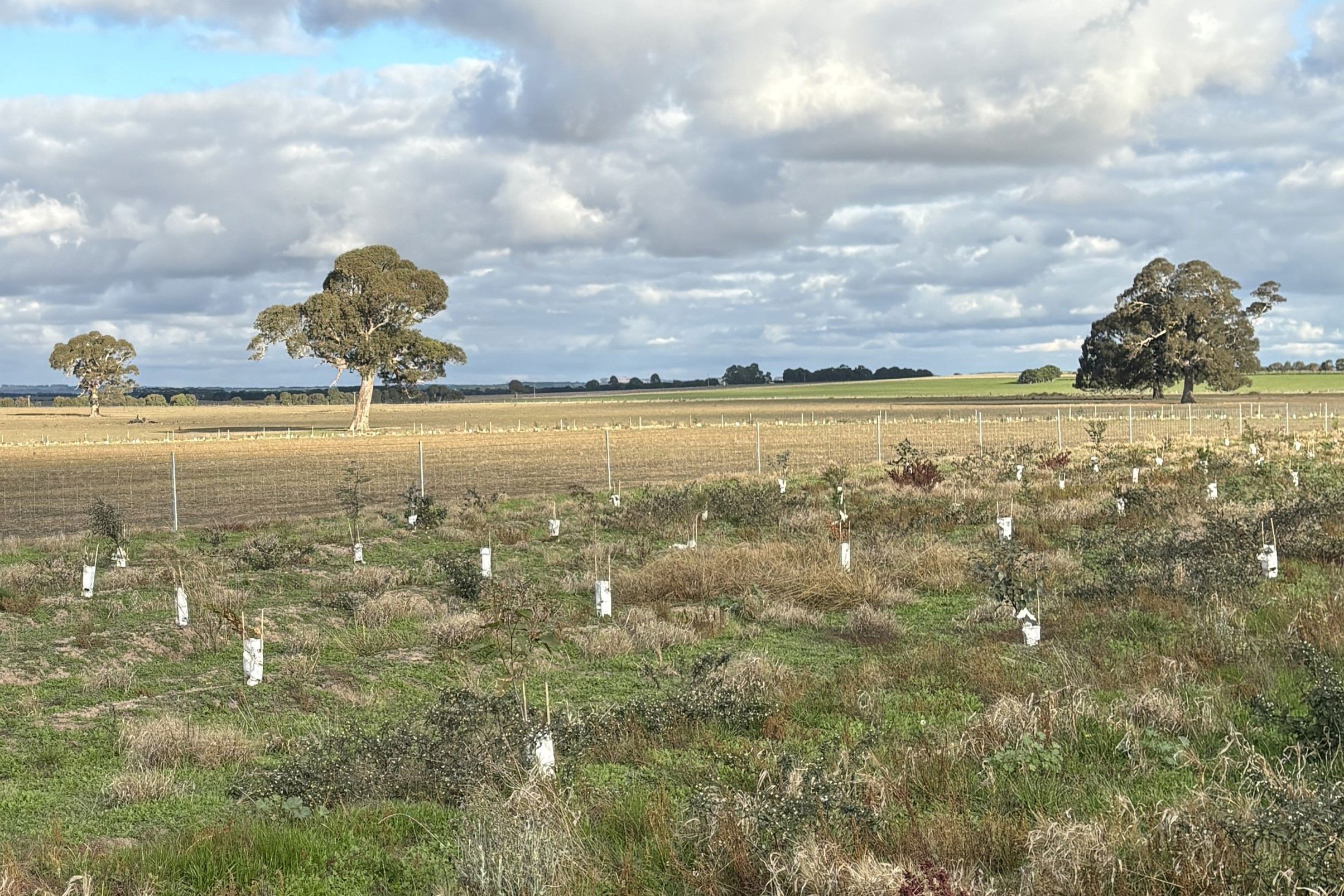Growing opportunities for natural capital: A new frontier for Australia’s agrifood sector

Image credit: AgriFutures evokeAG. A version of this article originally appeared in AgriFutures evokeAg and is republished with permission.
The CEFC Head of Natural Capital Investments, Heechung Sung was part of a panel discussion ‘Natural capital: An opportunity ripe for the picking’ at evokeAG. 2024, alongside Catherine Bell, Partner, ESG and Climate Services, RSM Australia; Bob Nixon, Director, GRDC, and farmer, Bunketch Ag; Nicole Yazbek-Martin, Head of Taxonomy and Natural Capital, Australian Sustainable Finance Institute.
By Justine McClymont
4 April 2024
With the World Economic Forum predicting an estimated $10 trillion business opportunity for nature investments by 2030, investors are becoming increasingly interested in natural capital. But, while natural capital is the latest phrase on everyone’s lips, taking it from a concept to achieving real-world, valuable outcomes is challenging.
Investing in nature and the land
So, what does natural capital mean? How can it be quantified and valued? And what opportunities can it unlock for Australia’s agrifood sector? These questions and more were answered in a panel discussion at AgriFutures evokeAG 2024.
Natural capital is described as natural assets that have intrinsic value and provide a vital service to society, for example, soil, water, air, and forests. We rely on these natural assets to produce food and fibre, and to help regulate the climate, among other things.
Heechung Sung, Head of Natural Capital from the Clean Energy Finance Corporation explains why natural capital is important for the Australian agrifood sector and what it means from an investment perspective.
“From our perspective, natural capital are just natural assets that intrinsically have value for all of us. Whether it’s for medicine, food, fibre, water, animals or shade. From an investment lens, we look at assets where you can price that value.Heechung SungHead of Natural Capital, CEFC
“For Australia, it’s agriculture and forestry. Those two key assets in nature are critical to our economy, but also from a decarbonisation perspective and our low-carbon future for Australia, are really critical in the transition pathway.”
Reporting frameworks
The International Financial Reporting Standard (IFRS) has developed frameworks for reporting on sustainability and climate. Two standards (IFRS S1 and S2) have already been released at the start of the year, with Australia currently looking to phase in mandated climate risk reporting (S2) by 1 July 2024. Australia will likely look to expand and scale further sustainability reporting, including specific nature-related financial disclosures in time.
Nicole Yazbek-Martin from the Australian Sustainable Finance Institute says a classification system (or ‘taxonomy’) is also being developed, which considers activities across the economy and classifies them according to the sustainability grid. This will be available by the end of 2024.
“So that could be whether they drive climate mitigation outcomes, adaptation and resilience outcomes or promote nature,” says Nicole.
“When we are thinking about natural capital, we are looking at identifying the activities – and the management practices and investments into these natural assets to look after that asset, grow that asset, protect, enhance and restore it – so that we have a good natural asset base to continue producing the things that we want going forward.”
Managing business risk
From an accounting perspective, Catherine Bell from RSM Australia explains that natural capital is all about managing business risk.
“Fifty per cent of global GDP is dependent on nature. The alarm bells are going off based on the fact that depletion of our natural assets globally is a business risk and it’s a risk to our global financial markets. “The money and the markets have woken up. We need to look at the opportunity and recognise that our markets are transforming at breakneck speed.”
Growing opportunities for natural capital
But what does it all mean for Australian farmers? Jackson Hewett from AuctionPlus says, “In the last few years sentiment has changed from being worried about carbon and emissions reporting to this idea of natural capital. It’s turning it around to an incentive-based product, rather than a punitive one, or it’s trying to blend them together.”
As someone who recognises the incentives and opportunities, Bob Nixon, Grains Research and Development Corporation, Director, and producer has been focussing on improving business resilience, and soil health planting trees on properties in the northeastern wheatbelt of Western Australia.
“Fifty per cent of the Australian continent is controlled and managed by producers. So, we have a bigger impact than anyone on natural capital.
“Carbon’s a building block of natural capital and it’s always going to be the biggest value pool with well-developed markets. The real value to natural capital is carbon’s co-benefits such as biodiversity in regev (sic) and productivity gains from soil health.”
Bob says that while carbon payment is an attractive incentive, the main driver should be improving the long-term biodiversity, soil health and natural capital of the land.
“How do we manage this going forward to not just make it a good investment protecting and adding value to our farming asset, but increase opportunity and jobs for rural Australia? I think that’s going to be a really interesting challenge,” he says.
Nature positive future
Whether it’s about emissions from operations or activities to improve natural capital, Australian farmers will need to be able to provide reliable data and information to remain competitive.
“Our clients are already feeling the questions that are coming down the line through the supply chain, whether it’s Costco from the USA, insurance, bankers, the supplier up the road, or employees,” says Catherine Bell from RSM Australia.
“All these suppliers are going to have to not only understand what their carbon emissions are, but they’re going to have to come up with a transition plan around how are they going to reduce their emissions.”
But this also presents huge opportunities in a low-carbon economy.
“Ultimately you need to look inside your business to start with, and then you need to look at the opportunities externally around what new nature positive opportunities out there. And that is a huge opportunity for the farming industry and agricultural businesses,” says Catherine.
Showcasing opportunities for investors
Nicole Yazbek-Martin from the Australian Sustainable Finance Institute says the opportunities need to be made clear for investors.
“We really need to start making visible what those opportunities are and to understand what the risks are. If we are ready to understand the value of natural capital and the resilience benefits that it provides help to mitigate that risk, we need to understand how these things all work together.”
“Once investors and financiers understand the risk, then the appetite is open to grow, and we need to start packaging up those opportunities.
Backing a new frontier for Australian agriculture
While Australian superannuation funds might still be playing catch up when it comes to investing in natural capital, offshore investors are already seeing the potential of Australian agriculture.
Canadian pension fund CDPQ and the Clean Energy Finance Corporation have recently invested a total of $200 million in the Wilga Farming platform to reduce emissions and improve sustainability.
“Whether it’s the recent Canadian pension fund that co-invested alongside us and put three times our capital into a farmland investment portfolio, for us that’s success.”Heechung SungCEFC
“That’s indicating to the world that Australia’s natural capital assets are investible, they make money, and we are incredibly efficient. “
“Investors are literally risk managers, not too dissimilar from farmers. We’re managing risk all the time. Our role is to stand in the market to back the sector and inherently to say it is investible.




